Right in the bullseye: new developments of high-precision ground weapons
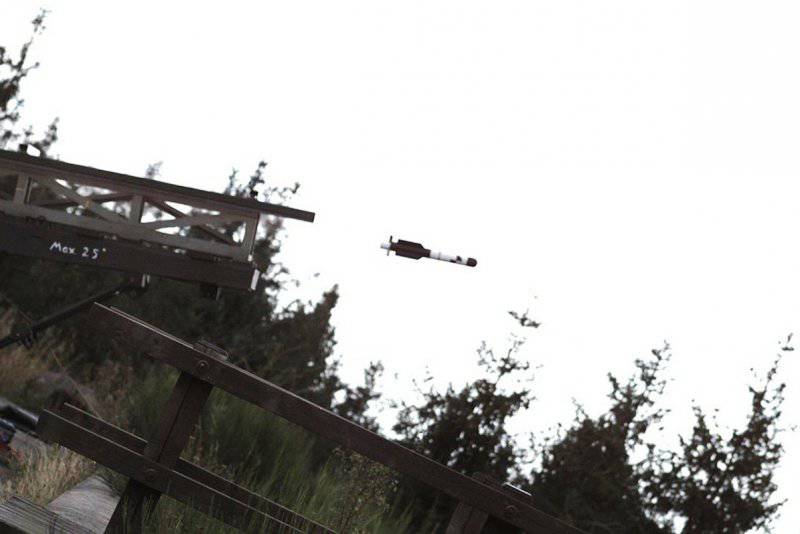
The first launches of the KFK rocket at the end of the 2012 of the year, testing a new smokeless engine. Little is known about the test launches, except for the MBDA claim that the unguided rocket flew as far as expected.
The need for high-precision guidance and reduction of indirect losses was the impetus for the development of a considerable number of advanced weapon-level weapon systems, as well as fire support systems.
The emergence of ground-based precision weapons in the past decade has allowed soldiers to evoke an unprecedented amount of firepower on targets located in close proximity to their own positions.
Mentioning that the range of certain types of weapons are close to 100 km, and accuracy is within ten meters, the senior officer at the AUSA conference in October 2012 added that trust in the accuracy of fire support systems eliminates the concept of "dangerous proximity". Obviously, this was an exaggeration, but the fact remains that modern ground forces rarely have to fire at targets when artillery fire "walks" within great limits.
As always, there are two main types of high-precision capabilities: indirect fire support using systems such as Lockheed Martin guided missiles for multiple launch rocket systems and Raytheon Excalibur guided artillery shells at the highest level. There is also a growing interest in high-precision, short-range weapons, such as Rafael's Spike NLOS, and, at a lower level, portable systems capable of delivering high-precision impact.
Starting with low-level systems, several countries have increased the number of heavy weapons complexes in their infantry units deployed in Afghanistan so that these units have increased opportunities for hitting targets in shelters. When entering into contact with snipers, sheltered in well-protected positions, often the first means for dismounted soldiers was a portable anti-tank complex to accurately neutralize the sniper from a distance beyond the reach of his weaponry. This practice has basically proved its effectiveness, but no doubt it was very expensive, especially since light portable complexes are not ideal for working at extreme temperatures and in the high mountains of Afghanistan.
Therefore, users began to search in other directions. For example, the US Army accelerated the adoption of its recoilless “rifle” Saab Carl-Gustaf M3 for punching walls, which were previously used only by special units. The army in 2010 began deploying a ATK XM-25 programmable fuse to destroy targets for natural cover.
Germany is currently considering a more specialized high-precision solution as part of its Wirkmittel project. Here, MBDA is working on its new KFK rocket (Kleinflugkorper is a small rocket), the curtain over which was ajar after flight tests in September 2012.
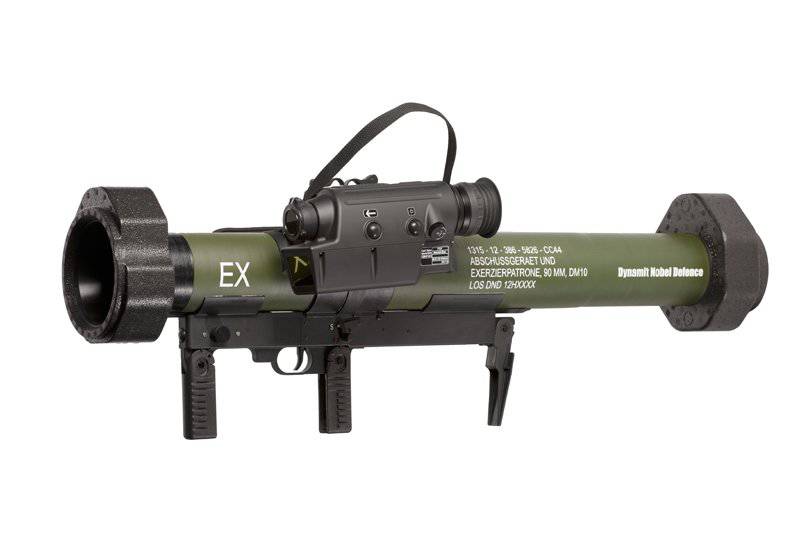
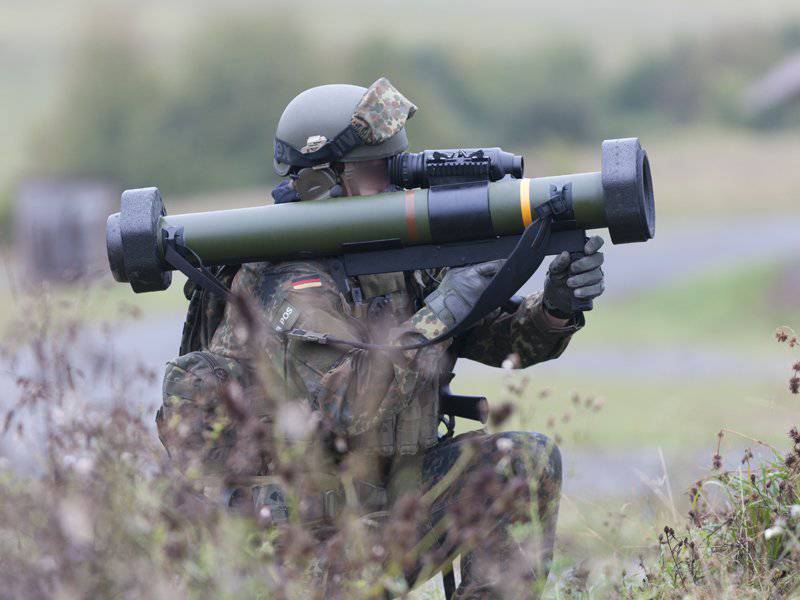
Wirkmittel 90 Launcher
The name of the rocket is quite consistent with its size, since the system belongs to “a smaller class than existing missiles,” which makes it possible to transfer it to almost every soldier with a minimum additional load for separation. A representative from MBDA said that the development goal was to supplement such existing systems as, for example, “Carl-Gustaf, Matador, or AT-4”, and not to replace them. These already in use systems could be used to make aisles and where unmanaged striking power is needed, while KFK could be used for more accurate exposure, in particular to fight snipers in protected positions or in situations in which very low probability of indirect losses.
The representative of MBDA said that the project is about a year (as of October 2012) and the company is currently evaluating and reducing the technological risks for this system, which may be the first in the family of new weapons. She conducted two flight tests of the new smokeless propulsion system in September 2012.
He declined to elaborate on the tests or the manufacturer of the new rocket engine, saying that suppliers and technologies of the serial system may still change. This also applies to the guidance kit and the missile warhead. Although the decision to adopt an accurate targeting system has not yet been made, a company spokesman acknowledged that the rocket will have a system with a target lock before launching LOBL (lock-on before launch), which most likely will use optical-electronic or semi-active laser guidance to neutralize targets in direct visibility.
There are no plans to install a communication channel of any type, at least in the initial stages. Thus, a shot-and-forget missile will have its own homing kit.
The warhead can also be changed, since its set of high-precision targets includes mostly sniper caches and unarmored targets. The company MBDA suggest to use a fairly standard high-explosive warhead, possibly with fragmentation effects.
Her counter-sniper role means that she needs to surpass her likely target. The company intends to achieve a missile range of at least 1,2 km, and maybe 2 km. Such ranges are not an exception for traditional anti-tank missile systems, of course, but a very difficult task for a small controlled system.
On the only available image of the rocket today, cruciform short stabilizers are visible in the tail of the rocket with long-horned wings along the hull, providing aerodynamic lifting force and contributing to increasing the rocket’s range. But, nevertheless, a representative of the company noted that the final appearance of the rocket may undergo some more changes.
Along with the large-scale deployment of this weapon, another primary design goal is to ensure its low cost: “We are talking about several thousand euros,” said a company spokesman. "We are not talking about tens of thousands, otherwise it will lead us into another category of missiles." Along with reducing the cost of the rocket, “we are studying interfaces that will allow us to use a single sight, also for other unguided weapons systems. Achieving a compromise between price and capabilities will allow you to decide whether the rocket will be launched from a reusable or disposable pipe. ”
As part of the KFK project, we are constantly working on modeling, testing and risk reduction, which in the end should have been completed with full-fledged shooting tests in the 2013 year.
The Israeli company Rafael already has in its account a pair of small light systems from its Spike family; she demonstrated her Mini Spike and Spike SR (Short Range - Short Range) complexes in the summer of 2012, at the Eurosatory exhibition in Paris.
Mini Spike - an inexpensive universal weapon with a small fragmentation warhead, designed to accurately hit unarmored targets. The Spike SR complex is a much more standard kit; it is optimized for more traditional defeat tasks tanks and armored vehicles.
Like KFK, the Mini Spike complex takes full advantage of component miniaturization. It includes a miniature launch control unit MICLU (miniature control control launch unit), designed for targeting and launching missiles of the entire length of 80 cm. It can be transported in special backpacks, one person carries MICLU and two missiles, and the second carries four missiles in a container .
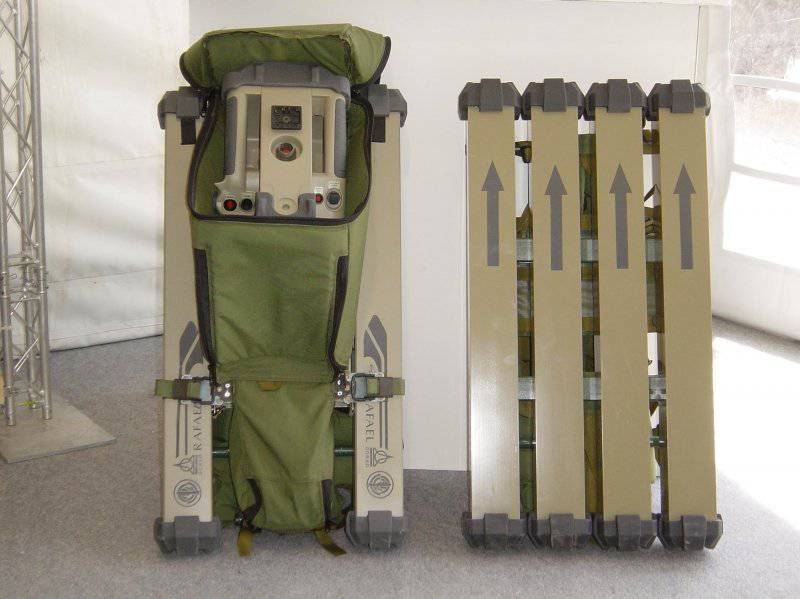
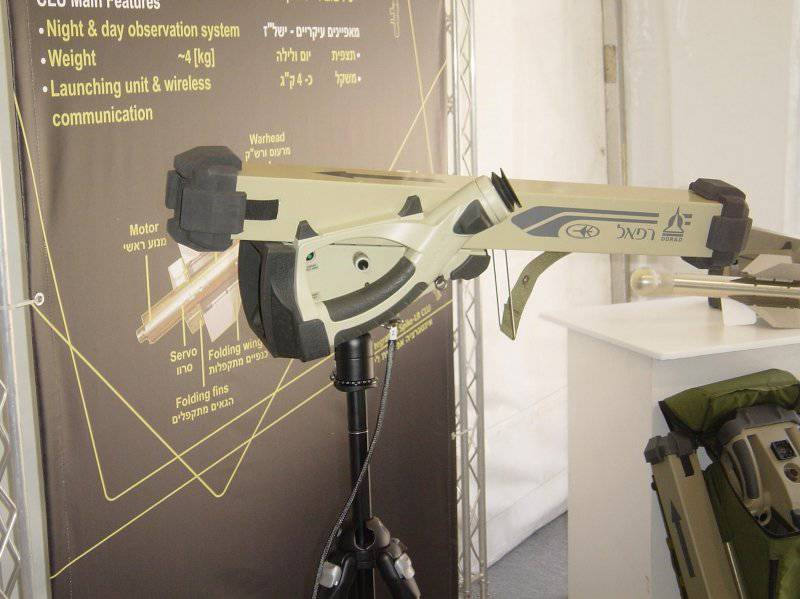
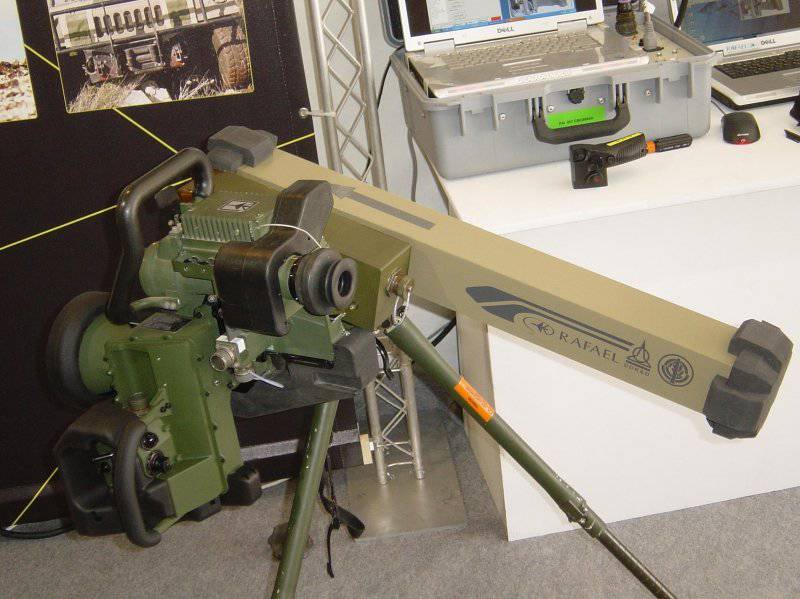
The Mini Spike rocket has a total length of 80 cm, but it also has a dual-mode homing head and a radio-frequency communication channel, which increases the range. On the right is a complete set of equipment
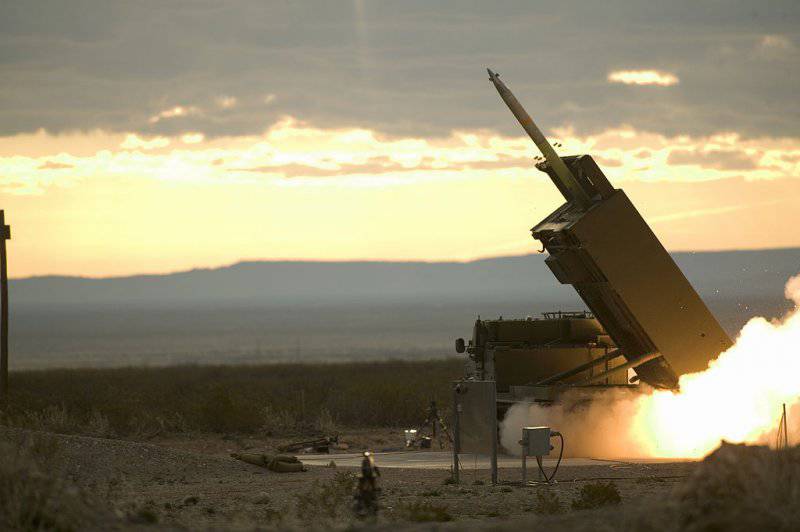
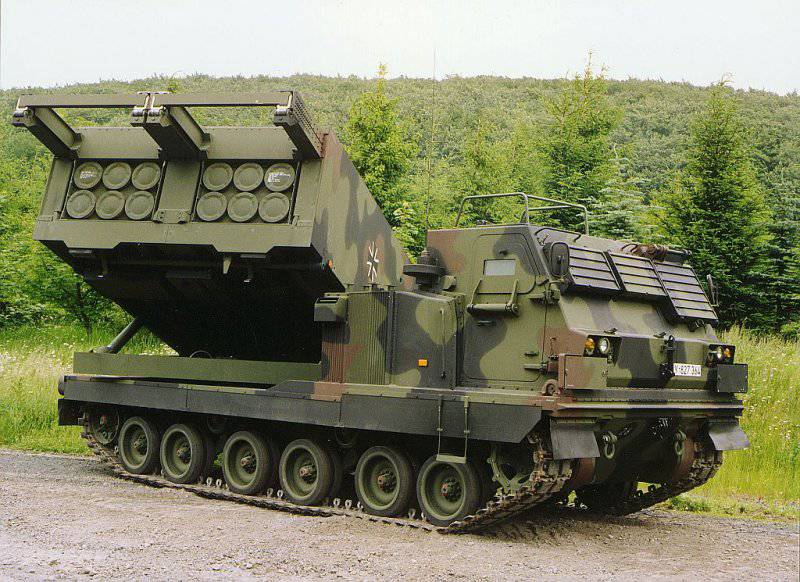
The upgraded launcher M270B1 of the British army firing regular GMLRS missiles during tests at the White Sands missile range. Below M270А1 of the German Army
Shoot and watch
The complex uses a dual-mode homing head with an uncooled infrared sensor and a color day camera and has a range of up to 1,5 km with three pre-selected flight profiles for greater flexibility in dealing with various targets. It is a “shot-and-forget” system, but differs from KFK in that it also has a “shot and watch” mode with operation in the radio frequency range. The entire complex, a rocket and a sight, weighs 4 kg.
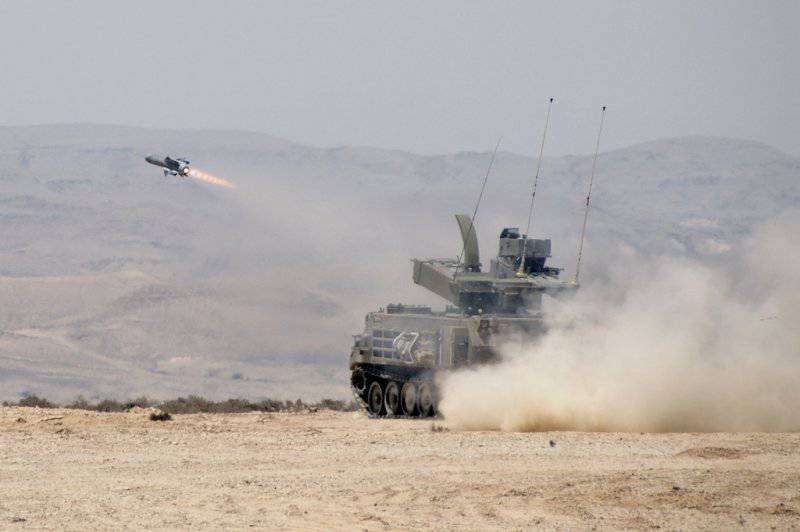
The Spike NLOS missile launched from the Israeli armored personnel carrier M113 is similar to the options used by the British Army
The next soldier-level system is Rafael's Spike NLOS, which has been in service with Israel for many years. At the end of 2011, she became the main newswhen it turned out that the British army secretly bought and deployed this system (still standing on the Israeli armored personnel carrier M113) in Iraq in the 2007 year, and then in Afghanistan in the 2009 year.
Israel used this rocket to destroy rocket and mortar groups. It was guided by the coordinates provided by the UAV observation, but it is clear that in Afghanistan it was used as a simple defensive tool to combat systems firing from closed positions and provide fire support for infantry.
The system is well suited for such tasks, the rocket has a hinged trajectory and relatively low flight speed, which allows the crew to use the camera in its nose to accurately aim the radio frequency channel at the target (often with a very steep dive down) at distances up to 25 km from the launch site . All this is combined with a fairly small warhead, which allows you to use a rocket in urban environments and destroy targets firing from closed positions. Previously it was believed that when placed on reverse slopes or deep in urban neighborhoods, they are in relative safety.
Other users are beginning to understand its potential. In 2011, South Korea ordered some 50 missiles for units deployed on Baengnyeong and Yeonpyeong islands in the Yellow Sea, near the place where the South Korean corvette Chon An was sunk in 2010. In addition, the island Yeonpyeong is also the object of shelling by North Korean artillery.
However, at the end of November, on the day of the second anniversary of the attack on Chon An, the news came that their deployment was postponed until March or April of the 2013 year. The representative of the Office of Defense Programs said that the missiles had not yet been delivered due to the “technical problem” that was being studied.
The GMLRS (Guided Multiple Launch Rocket System) unitary munition in recent years has been the basis of artillery ammunition in several countries.
Unitary 227-mm rockets with GPS guidance GMLRS are in service with the American army and the Marine Corps, Britain, France, Germany and Italy, and they all contributed to its original development. Options were also sold to the UAE, Jordan, Singapore and other unnamed states.
GMLRS unitary projectiles carrying a single two hundred pound high-explosive warhead for pinpoint targets played a prominent role in high-precision operations in Afghanistan, where they destroyed targets at distances over 90 km, although the American army speaks of its ballistic distance from 15 km to 70 + km.
Projectiles are often launched with volleys with a different number of launches; each projectile is programmed separately, receiving its own set of GPS coordinates with a radial accuracy less than 5 meters from the target. On 20, November 2012 was launched by the US Army, Marines and the British Army 2418 unitary missiles GMLRS.
The company begins work on the next contract for the seventh batch of GMLRS Unitary missiles, which must be supplied to the US Army, Marine Corps and the armies of Italy, Jordan and Singapore. It was reported that shipments of this lot will begin in the 2013 year and continue throughout the 2014 year.
In the meantime, Lockheed Martin continues to work on its own GMLRS + project, in which potentially promising GMLRS options are being studied, and at the same time begins to adapt the results of these works to the specific needs of the army.
Factory tests of the GMLRS + demonstrated a “scalable warhead”, which will allow for adjusting the detonation force of the warhead depending on the target, tested the ability of the system to change the trajectory of projectiles equipped with a homing head with a semi-active laser in the direction of the highlighted targets, and a flight test for a long range of 130 km However, the army, apparently, is mainly interested in the range and made an information request to manufacturers about the potential for increasing the range of GMLRS missiles to 250 km.
“We want our thoughts and our investments to focus on this newest requirement for extended range,” said Scot Arnold, vice president of precision arms at Lockheed Martin. “For this, the company expects to conduct tests in the wind tunnel and test rocket engines in the 2013 year.”
Similarly, responding to the interest of the army in long-range fire, Lockheed Martin studied the idea of modernizing the ATACMS (Army Tactical Missile System), which has a range of up to 300 km. These works will be "focused mainly on affordability and moral depreciation."
GMLRS was originally developed in two versions, the second type is a cluster rocket to combat aerial targets with 404 striking elements M101 DPICM (Dual-Purpose Improved Conventional Munition), currently this version of GMLRS is discontinued.
The Pentagon's decision on 2008 on cluster munitions and unintentional harm to civilians requires replacing the DPICM warheads with an alternative warhead GMLRS Alternative Warhead (AW) that leaves no unexploded ordnance on the battlefield. The AW program was carried out by ATK and Lockheed Martin, which began in April 2012, the 36 month-month final design and implementation phase. The US Defense Department will begin deploying GMLRS AW systems in 2015.
As for the launchers, the army has 223 machines MLRS M270A1, while the army and marines have 380 from the planned 420 installations M142 HIMARS (High-Mobility Artillery Rocket System).
HIMARS is installed on the five-ton chassis of an FMTV wheeled truck (Family of Medium Tactical Vehicles) and is considered an improvement of the M270A1 system. It must reduce operating costs and require fewer strategic moves (performed by C-130 Hercules or C-17 Globemaster) to transport the battery compared to tracked MLRS.
However, in the long run, the US Army plans to have both HIMARS and MLRS systems in its divisions, so M270A1S should receive a booth with enhanced protection, universal MSAs and other improvements to reduce obsolescence and increase unification with the M142 platforms.
The HIMARS platform carries either a six-rocket container or one ATACMS rocket. The complex can load rockets on its own, serviced by the calculation of three people from an armored cabin protecting against exhaust gases, fragments and ballistic threats.
At the smaller end of the precision strike range, the US military continues to develop X-NUMX-mm Excalibur GPS-guided munitions.
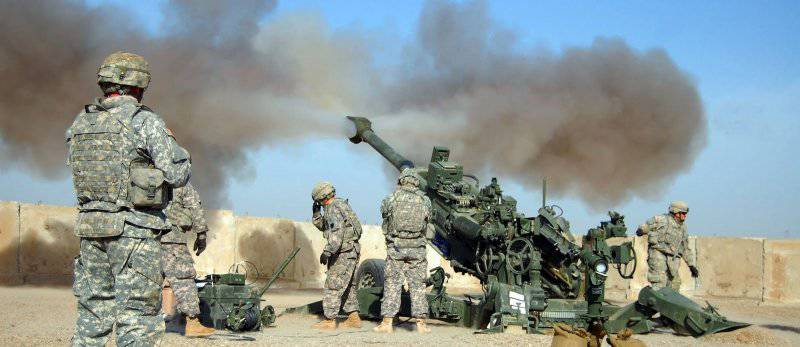
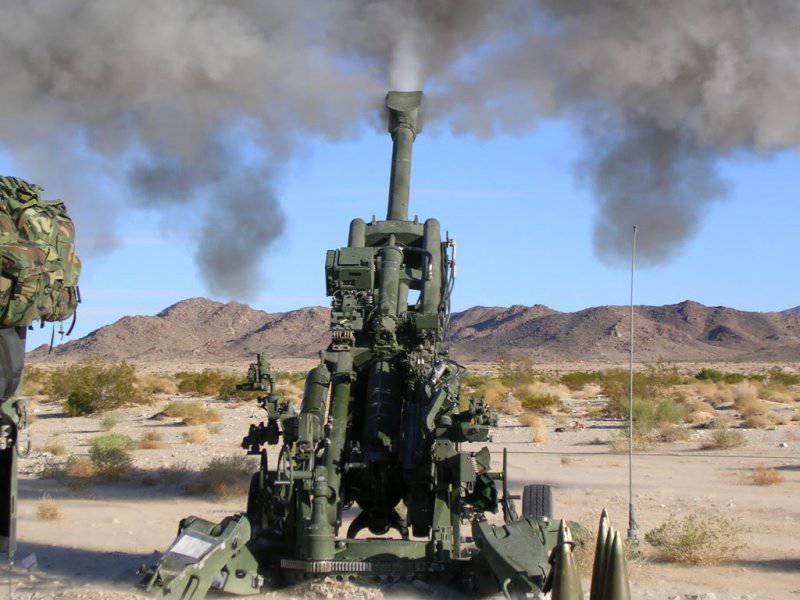
The good mobility and high accuracy of the M777 howitzers were highly appreciated by the military in Afghanistan, where the howitzer fired, among other things, GPS-guided Excalibur Block Ia-2 projectiles

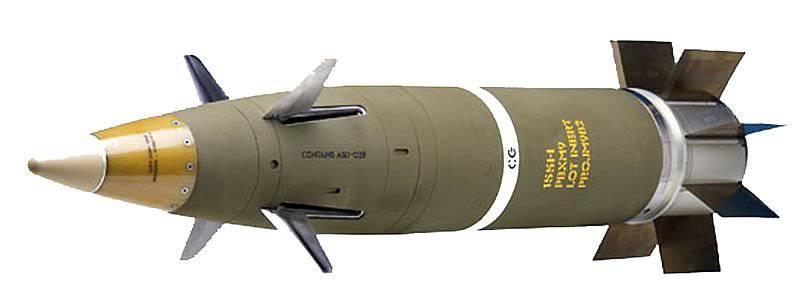
GPS-guided Excalibur projectile
GPS guidance technology
At this time, Excalibur munitions were deployed in two versions: the Ia-1 variant (XM982 designation), production and deployment of which began in the 2007 year, and the subsequent Ia-2 (M982) version, which has a longer range, improved noise protection and a bottom gas generator from BAE Systems Bofors.
At the end of October, Raytheon’s 2012 reported “more than 600 projectiles” shot at theaters at that time. The ammunition uses GPS guidance technology to obtain radial accuracy of about 6 meters, the company said. This allows the use of weapons in urban environments and use for fire support when their forces are located in the immediate vicinity of the enemy.
At the end of November 2012, the army evaluated the Excalibur test results of the following performance, Block Ib (M982E1), which was designed to reduce the cost of the projectile by about 50%, which ultimately will depend on how many pieces will be purchased.
In order to qualify and announce the initial production scheduled for this month, the army and Raytheon conducted a series of tests of Block Ib shells in September and October 2012.
The company said that at the end of October, during the qualification tests, all eight Ib shells landed in 5 radius from their targets. There was also a "successful" tests for reliability, 14 "test shells" were shot from a self-propelled howitzer M109A6 Paladin under extreme environmental conditions. The shooting procedure included shooting shells at an angle of 17 ° at targets at distances over 35 km.
In June, Raytheon reported that the Marines set a record by shooting two Ia-2 Excalibur projectiles at a range of over 36 km in real combat conditions.
While the distances are growing, it appears that the expenditure of projectiles on a theater of war also grows. In June, 2012, the company Raytheon announced the shooting of more 500 shells, and by the end of October, 2012, announced more than 600 shells. Of course, this is an imperfect measurement of necessity or practicality, since the number of projectiles fired depends on their availability, firing rules and other external factors, but, nevertheless, the use of an Excalibur projectile is growing.
This could change the trend that the army observed in its portfolio of ammunition in 2010. Then the army reduced the planned volume of purchases of high-precision ammunition, as it turned out that they were not spent as much as expected.
Indeed, predictions suggested that the demand for high-precision shooting could continue in the next decade, even if the war in Afghanistan would gradually disappear in the next two years. Sales of artillery ammunition or guidance kits produced for NATO countries can be approximately 6,27 billion dollars from 2012 to 2021 a year, based on planned orders of approximately 130000 kits.
In the meantime, the US Army and Marines are once again exploring the barrage of precision-guided munitions, although this time at the level of separation.
After conducting several demonstrations in an information request in August 2012, the army requested industry data on possible LMAMS solutions (Lethal Miniature Aerial Munition System - a lethal miniature air munition). In the army, LMAMS is viewed as "a locking high-precision ammunition that is in service with a small unit that allows you to hit enemy soldiers on an unprecedented scale without putting a soldier into direct enemy fire."
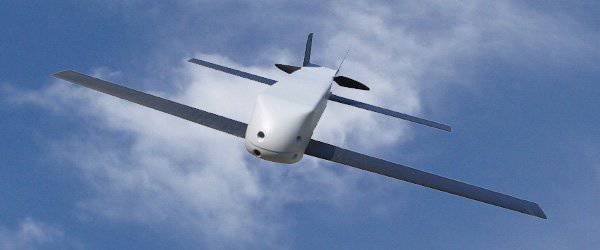
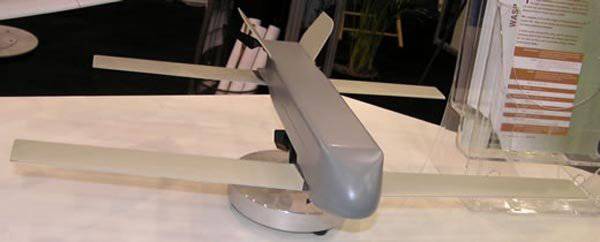
The LMAMS system integrated into this Switchblade UAV works as locking ammunition for unprotected targets, such as personnel and unarmored vehicles.
Such a system could theoretically include a full-fledged projectile consisting of a body, sensors, built-in guidance, such as an inertial navigation system or autopilot, a warhead, a data channel, and a launcher.
The request states that LMAMS should most likely have a flight duration of approximately 15 - 30 minutes and a range from 5 to 10 km.
For LMAMS, it is desirable to be “able to work autonomously, semi-autonomously or in manual mode. The operator can select predetermined targets using geolocation data, visually select and identify possible targets, use loops, refusal, reload and redirect, arming / reset, and manually detonate the warhead, ”said the army, adding that they prefer to see mature technology around 2014 - 2016.
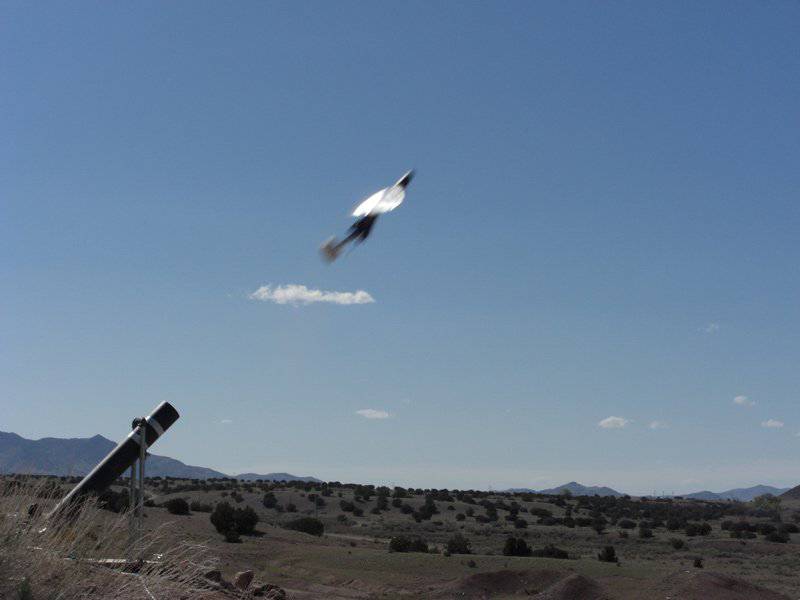
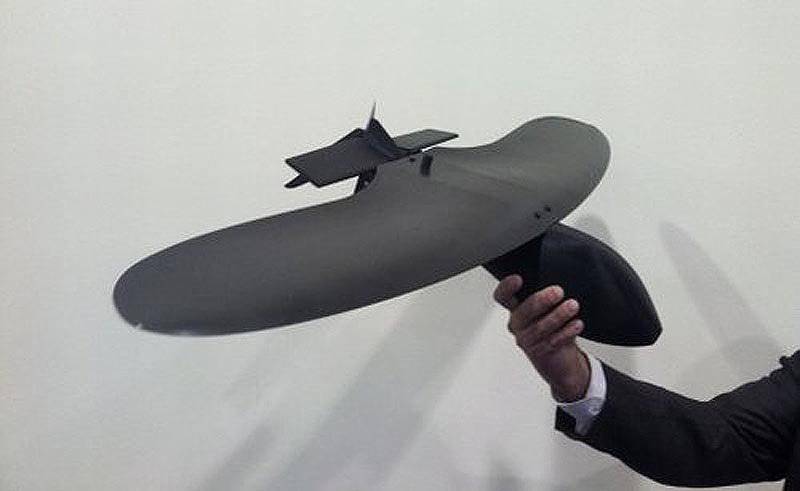
Spearling ammunition BattleHawk from the company Textron Defense
Currently, several systems with LMAMS capabilities have been shown, including BattleHawk Squad-Level Loitering Munition from Textron Defense and Switchblade AeroVironment ammunition.
Textron Defense announced in May 2012 that the demonstration of BattleHawk for the rapid reaction force was completed. The system includes a 40-mm high-explosive fragmentation grenade mounted on a Prioria Robotics Maveric mini-UAV.
In the meantime, the army also evaluated the Switchblade from AeroVironment. A representative of AeroVironment confirmed that Switchblade was purchased by the army and the Air Force. The marines apparently also did not pass by this type of weapon.
The Switchblade is similar in size to an 60-mm mine, but it starts from a one-time barrel and then flies to the target either at GPS coordinates or in manual guidance mode with a bow camera.
The video is wirelessly transmitted from the ammunition and output to the standard mini-UAV control unit from AeroVironment, from which you can also control Raven, Wasp and Puma UAVs.
Materials used:
Jane's International Defense Review
www.mbda-systems.com
www.rafael.co.il
www.raytheon.com
www.saabgroup.com
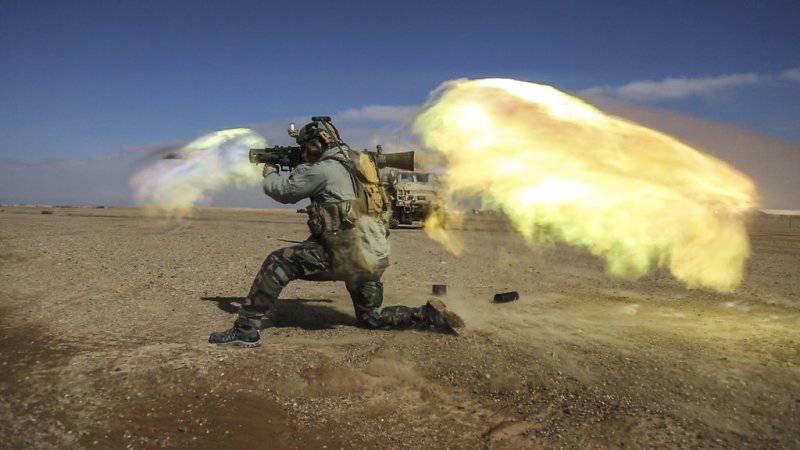
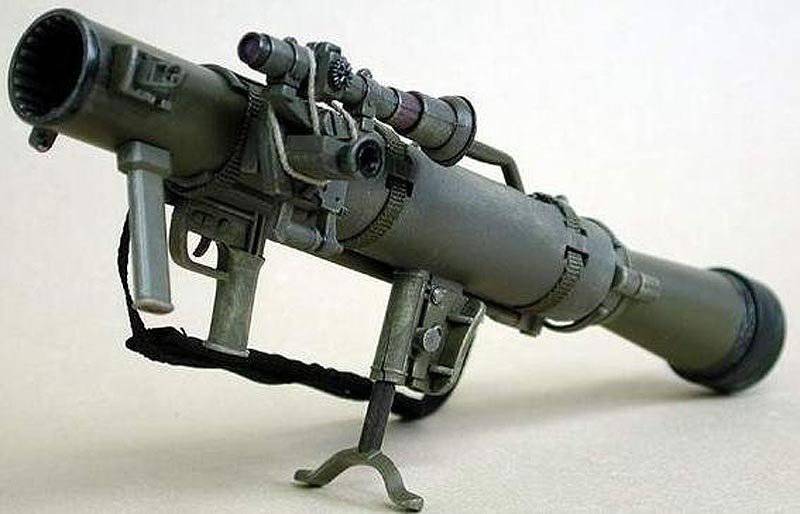
Information